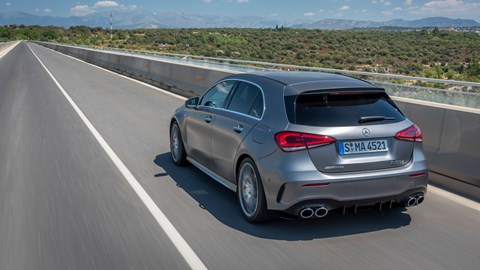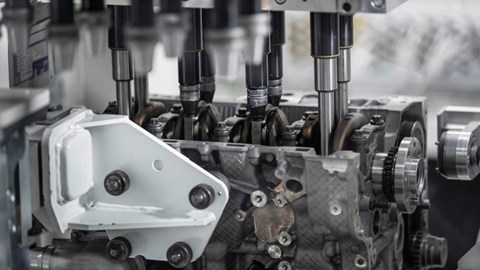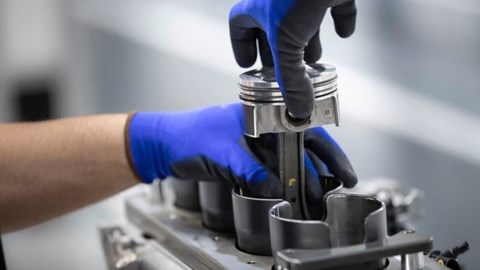► Put out class-leading 415
► 30% more powerful that CTR
► Efficient and well-packaged
Try explaining to AMG’s CEO Tobias Moers that an engine’s peak power output is ‘just a number’ – the man can barely contain his pride in the fact that AMG’s new M139 motor is, at 415bhp, the most powerful turbo four-cylinder engine in production.
What’s more, the competition aren’t even close. The four in BMW’s 135i 1-series taps out at 302bhp. Honda’s Civic Type R engine manages 316bhp. Okay, so both those cars undercut the AMG A45 S’s punchy list price (£50,570) but the truth is that with the same basic set of tools – four cylinders, a 2.0-litre displacement and a turbo – AMG’s engine is some 30 per cent (or 50bhp per litre) more powerful.

How does it work?
So, how has AMG done it? Key to the M139’s efficiency and potency is its orientation – described by Moers as ‘a fundamentally new’ unit, the four is rotated 180° relative to its predecessor, so that the exhaust manifold and turbo now sit at the back of the engine, nestled up against the firewall, and the intake system sits at the front of the engine. The advantages? Far shorter, more direct and more efficient plumbing for both intake and exhaust, together with a lower bonnet for less drag.
But power is nothing without control, and AMG’s worked hard to prevent the M139 being a laggy, unresponsive hand grenade of an engine. The turbo’s turbine is fed by two independent ducts from the manifold, so that the stream of turbocharging pressure is more consistent across the engine’s firing order, boosting torque and the engine’s ability to respond to your right foot’s bidding. To that end, the M139’s turbo also spins on expensive but low-friction roller bearings – a detail borrowed from AMG’s V8s. The big twin-scroll turbo is treated like royalty, with twin ducts from the exhaust manifold to boost torque and response.

It also gets a hefty cooling system, spins on roller bearings and is managed by an electronic wastegate, to optimise the turbo for any combination of throttle position and engine speed. And each exhaust valve gets a choice of two cams, rather than one compromised one.
Boosting power and durability further are a heavy-duty cooling system (the turbo is air-, water- and oil-cooled), a super-rigid, race-inspired crankcase design and forged aluminium pistons running in bores coated with an F1-developed low-friction coating. The water pump’s electric, not linked to crank speed, so it works only as hard as it needs to.

And of course, like its V8s, each M139 four is lovingly assembled by a single AMG technician.